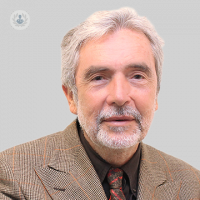Detecting and treating obstructive sleep apnea
Written by:What is sleep apnea? Does it have something to do with snoring?
Sleep apnea is a more or less prolonged and abnormal interruption of breathing while we sleep. The patient stops breathing or decreases the intensity of their breathing, in which case we no longer speak of apnea but of hypopnea, and that suffering from it causes a series of symptoms that are generally more diurnal than nocturnal.. The most important nocturnal symptom is precisely snoring and in this sense I would say that all patients with apnea are snorers although it is also true that not all snorers have apnea. The more intense the snoring, the more likely it is that the person will suffer from sleep apnea. They are two very interrelated processes, apnea always goes with snoring, snoring does not always go with apnea.

What people are prone and how do they realize?
The main factor for a person to suffer from sleep apnea is overweight, which can range from a slight overweight to a frank obesity.. The more obese the more chances of having apneas, and it also has to do with the distribution of the weight that is above all with fat in the upper part of the body and with an increase in the abdominal diameter. Independently of this there are other factors such as the small development of the jaw, an important factor also in adults, and in children we should bear in mind the hypertrophy of tonsils and hypertrophy of the adenoids. In adults also play other factors such as nasal obstruction due to rhinitis, etc.. but generally combined with some of the other factors that I mentioned. The person who suffers from sleep apnea does not realize during the night, they are usually the people who accompany them as the couple, parents, siblings, cohabitants of the same house.
What happens if the patient is not treated?
Depends on the severity of sleep apnea problem. It must be clear that nobody dies of an apnea, it is not possible and many patients ask. In general the damage is a cumulative damage and the first symptom can be drowsiness, these people can or can fall asleep very easily and this entails a danger, for example a traffic accident, so it should be taken into account as an immediate danger. And as an accumulated danger, as a series of disorders occur during the night, patients are usually hypertensive or may be hypertensive, with all the consequences of high blood pressure. They also have a greater tendency to some cardiovascular complications. These patients decrease oxygen saturation during the night, I always tell them that it is as if they went up to Everest during the night, for which they suffer a series of alterations in the body that in the long term, accumulated, produce cardiovascular, neurological, of mood, mood, drowsiness etc ...


